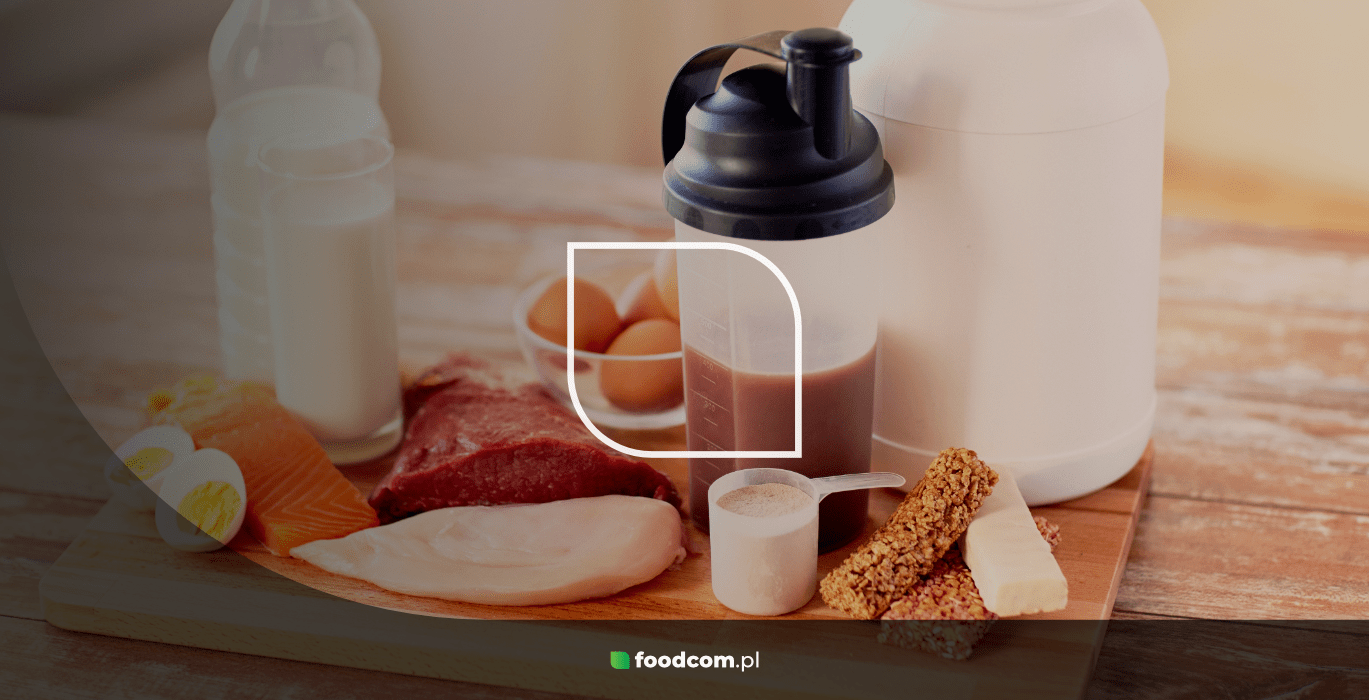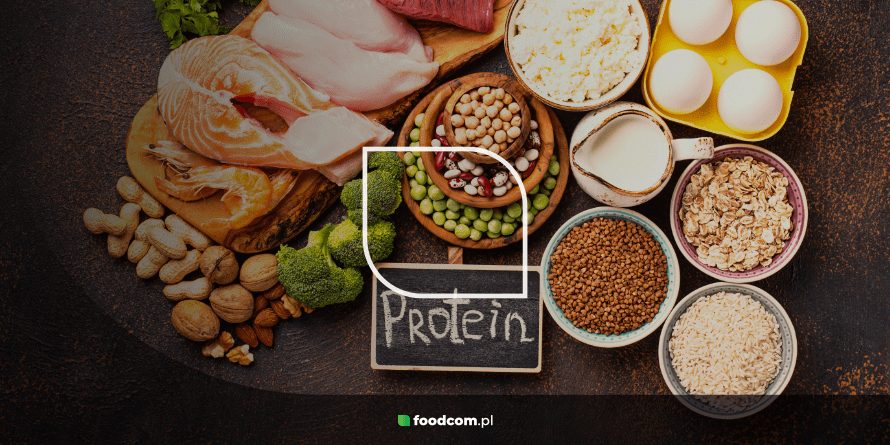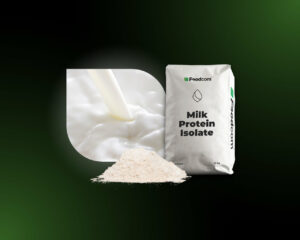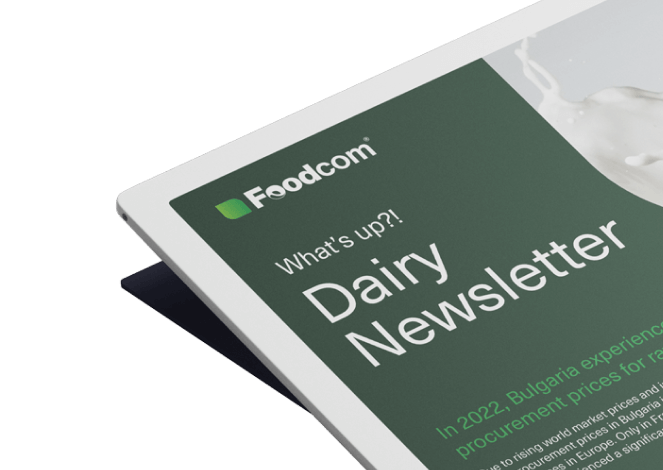- Protein supplements are a basic ingredient in the production of functional, sports, and specialized foods.
- The key types of protein supplements are concentrates, isolates, and hydrolysates, which differ in protein content, purity, and application.
- Protein sources include milk, whey, soy, peas, eggs, and other natural raw materials.
Protein supplements are products whose main use is to enrich a product, dish or diet with protein. These supplements contain a standardised amount of protein and amino acids, so they can be tailored to a specific use. Protein supplements can have different sources of origin, and we also distinguish between different types of protein and its uses.
What are protein supplements?
Protein supplements are highly concentrated sources of protein, obtained from natural raw materials – most often milk or whey, less often eggs, soya or other plant raw materials (peas, rice, hemp). Their purpose is to provide protein in an easily digestible form while limiting the fat and carbohydrate content of the product.
In an industrial context, protein nutrients are widely used in the production of functional, dietary, sports and speciality foods. Protein as a functional ingredient is responsible not only for the nutritional value, but also for the texture, stability, technological properties and sensory profile of the product, so that protein nutrients can also act as auxiliary ingredients in products.
Types of protein nutrients: overview of forms and properties
On the market we can find protein products derived from:
- milk or whey,
- plants (soya, peas, rice, wheat, hemp, quinoa, sunflower, pumpkin seeds),
- beef.
However, protein supplements differ not only in their origin. The basic division is between concentrates, isolates and hydrolysates. Each type meets different production and nutritional needs.
Protein concentrates
Concentrates are the basic form of protein nutrition, with a protein content of between 35% and 80% – depending on the level of purification. What is protein concentrate? This form of protein nutrition is produced through filtration, during which some of the fats and sugars are removed, leaving the majority of the protein fraction. Concentrates provide value for money and ease of processing. They are characterised by good solubility and moderate lactose content (in the case of milk or whey concentrates).
The various concentrates differ in functionality and price. Whey protein concentrate 80% (WPC 80) is a high-quality ingredient for manufacturers of sports nutrition, protein drinks and high-protein dairy products.
Whey protein concentrate 35% (WPC 35), on the other hand, is more affordable. It is mainly used in the animal feed industry as an additive for animal foods, as well as in bakery and the production of cheaper higher-protein products. Protein concentrates are also used in the production of protein drinks, creams, soups, sauces and in various meats.
Protein isolates
Isolates are raw materials with a protein content of more than 90%. Milk protein isolate (MPI) is almost completely free of lactose (less than 1%) and fat. It is low in calories, high in calcium and amino acids and has good absorption.
Thanks to their purity, stability and rich amino acid profile, protein isolates are ideal for formulas with a precise nutritional profile. Such products are used in:
- dairy products (desserts, creams, yoghurts, puddings, ice creams) and high-protein baked goods,
- soups, sauces, meats and cured meats,
- dietetic, medical and therapeutic food products,
- specialised products for people with lactose intolerance,
- infant formulae.
Whey protein isolate is also a commonly used ingredient in nutritional supplements for athletes who have an increased need for protein due to muscle expansion and regeneration.
Protein hydrolysates
Hydrolysates are the most purified form of protein nutrients, resulting from the enzymatic breakdown of protein molecules into shorter peptides. Hydrolysates are characterised by high bioavailability, low allergenicity and rapid metabolic activity. These are key characteristics for next-generation functional foods.
Of particular note is the popular whey protein hydrolysate 80% (WPH 80), which is used in sports supplementation and in the nutrition of the elderly, convalescents and the chronically ill. WPH 90 (whey protein hydrolysate 90%), on the other hand, stands out for its even higher purity and bioavailability and is therefore used in premium products and speciality foods.
What to look for when choosing a protein supplement?
In addition to the protein content and the degree of purification of a particular form of nutrient, the nutritional and technological characteristics that affect the quality and functionality of the final product are also important. Here are the most important evaluation criteria:
- high microbiological purity – especially for food and medical applications;
- clarity – especially for products such as transparent protein or isotonic drinks;
- neutral taste (possibly a slight bitterness due to the presence of peptides) – influences ease of use in formulation;
- gentle on the digestive system – a good quality protein should not cause stomach discomfort, bloating or allergic reactions;
- good solubility and ease of mixing with other ingredients – is crucial in the production of drinks, shakes or supplements in powder form;
- high absorption and bioavailability – affects metabolic efficiency, which is of particular importance in the nutrition of athletes, sick people and in specialised nutrition, where for this reason hydrolysates and isolates are mainly used;
- amino acid profile – in addition to the overall protein content, it is worth analysing the content of individual amino acids. Of greatest importance here are the essential protein amino acids (e.g. BCAA, lysine, threonine), particularly in products intended for athletes, infants and clinical use;
- technological properties – emulsification (e.g. of ice cream or sauces), influence on product creaminess and elasticity (e.g. of yoghurt), foam stability (e.g. in bakery products);
- thermal stability – especially for products subjected to heat treatment (e.g. baked goods) or pasteurisation;
- compliance with dietary requirements and certifications (gluten-free, lactose-free, GMO-free, vegan or organic certification);
- good value for money – concentrates tend to be preferred where unit cost is most important, and isolates and hydrolysates in speciality and premium products.
Protein supplements are the cornerstone of the modern food and supplement industry. Thanks to the variety of forms and sources, it is possible to tailor them precisely to the needs of the specific product and target group. Knowledge of the types of protein nutrients, their properties and their technological application allows manufacturers to create innovative and effective formulations that respond to dynamic market needs.










